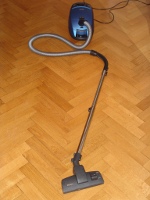 The effect of arthritis on daily life is often the biggest concern to those with arthritis, as the disease can many many common tasks, such as cooking, much more difficult. Treatments, such as medications, can only go so far and often carry side effects, so it is a good idea to find ways of reducing arthritis pain naturally throughout the day.
The effect of arthritis on daily life is often the biggest concern to those with arthritis, as the disease can many many common tasks, such as cooking, much more difficult. Treatments, such as medications, can only go so far and often carry side effects, so it is a good idea to find ways of reducing arthritis pain naturally throughout the day.
A big part of reducing arthritis pain involves making daily tasks easier and modify how someone preforms daily tasks, such as cleaning, laundry, and cooking, can often significantly improve quality of life among those with arthritis
Laundry and Making the Bed
Lighter materials, especially for bedding, can be easier to work with. Velcro, as opposed to snaps or zippers can be easier to use as well, both in daily life and in regards to making the bed.
When doing laundry, a front loading washer and dryer can be mounted on a slightly elevated base, making it easier to load and unload. Since ironing can be very painful on the wrist, so wearing a wrist brace and using a lightweight iron can help reduce pain.
If hanging close to dry, a clothesline that can be raised and lowered can be used, instead of having to reach up to hang or remove clothes.
Cleaning the House
One of the most important things to remember when preforming any task is that you do not have to do it all at once. This can be applied to almost any tasks, such as only putting away half the dishes at once and taking a break, but is especially true of cleaning.
By cleaning a little bit each day, it is possible to keep the home clean, without putting undue stress on the joints.
It is also a good idea to try to avoid bending and, when it is necessary, squat at the knees, rather than bending with the back. Also, using a pickup stick can help reduce the need to bend over.
Using devices with larger and more ergonomic handles can also help. For instance, using a dustpan with a long handle, like those used in a restaurant, can prevent the need for bending over. Handles with “T” shapes can also be used on brooms and mops, which are often easier to grab.
Cooking
Using kitchen utensils that are easy to grasp and lightweight can make cooking much easier. For instance, instead of using a cast-iron pan, switch to a lightweight aluminum or stainless steel one.
A number of large handled kitchen utensils are also available for those with arthritis, such as spatulas and potato peelers, which can be much easier to grasp and hold.
Finding other ways of cooking, like microwaving vegetables instead of boiling water can reduce the need to lift heavy objects. When putting dishes away, holding them tightly against the body, instead of only with the hands, can spread out the weight and reduce the amount of strain on the hands and wrists.